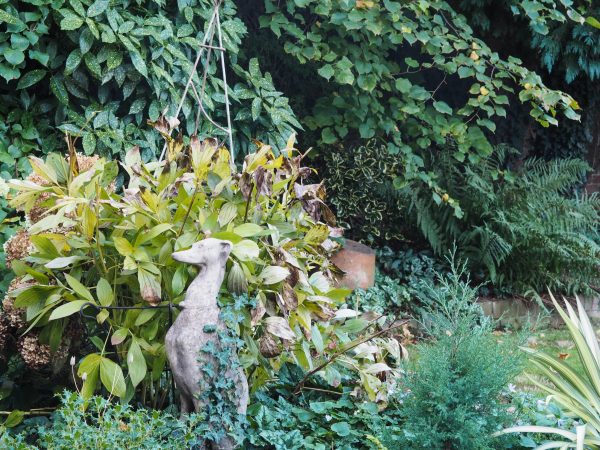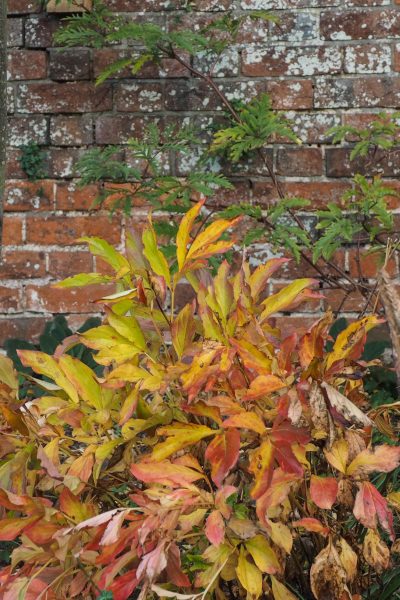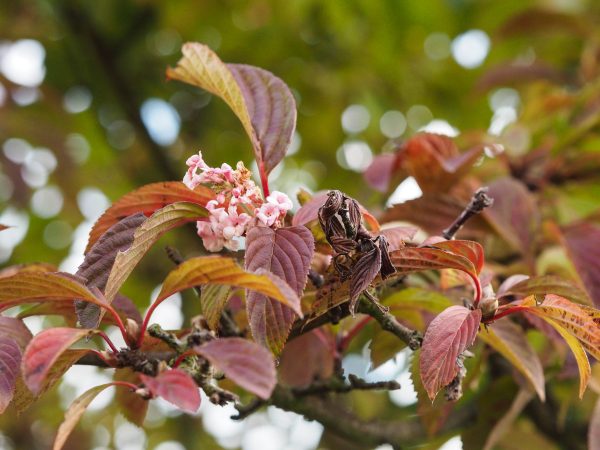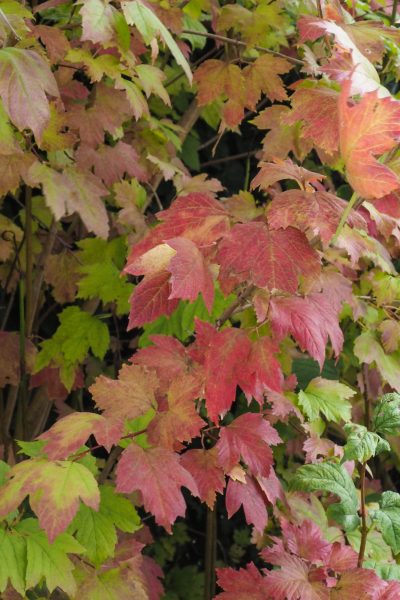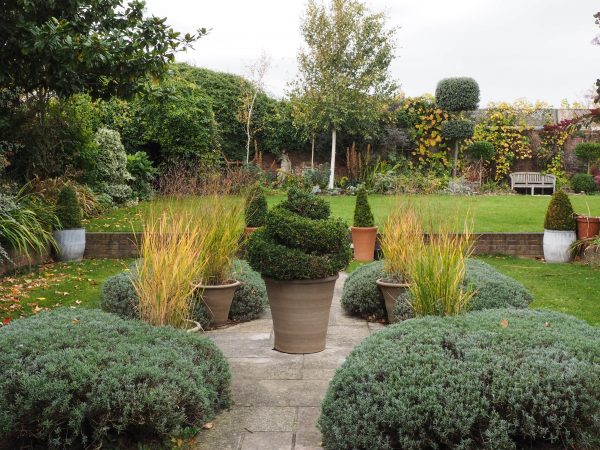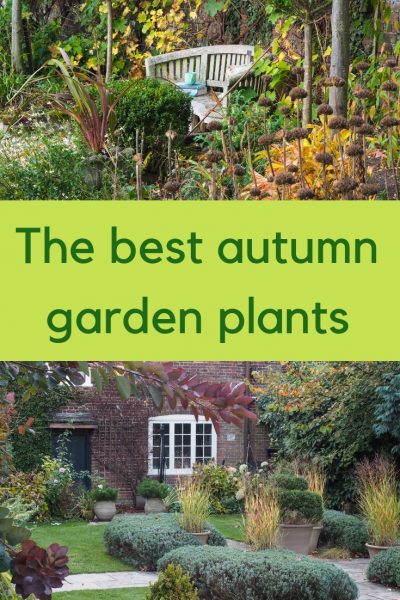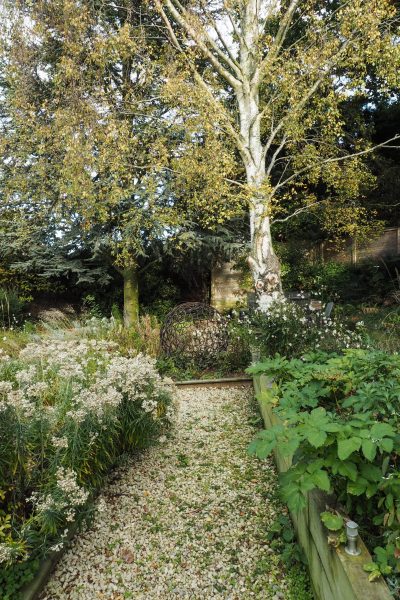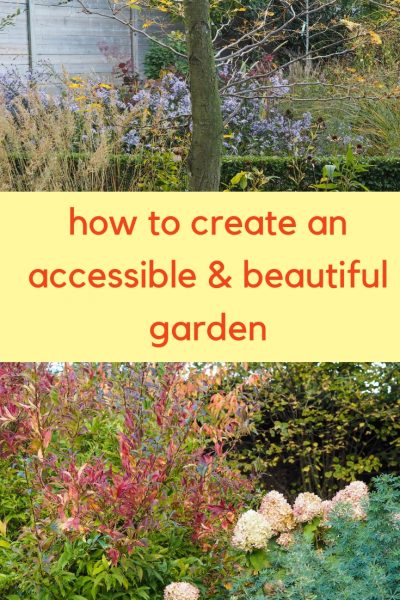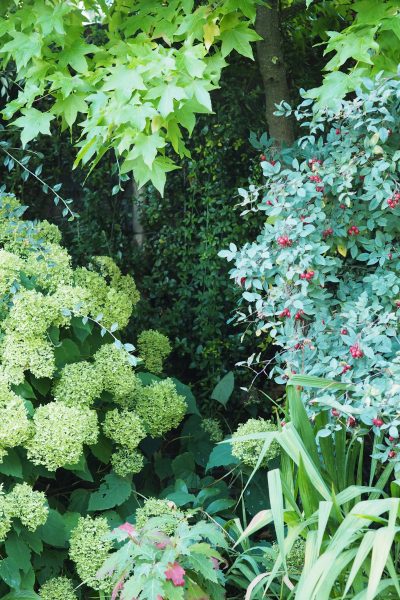Do you blog, vlog or podcast for money? And if so, are you doing it legally?
Or are you risking your blog being removed from Google listings?
Perhaps you get sent products for review? Surely that doesn’t count as an ‘advertisement’?
This isn’t just about bloggers. You need to know the rules if you’re doing videos, podcasts and social media posts….because things are happening out there.

Every so often, I do a post about blogging rather than gardening. And now the Advertising Standards Agency (ASA) is getting increasingly interested in the relationships between bloggers/influencers and brands, so it’s time for a blogging update.
The ASA has been working with bloggers, including Kat Molesworth of Blogtacular to make its rules on advertising and disclosure clearer. There’s been a recent re-release of the rules that cover how to blog for money: ‘They’re the same rules,’ says Kat. ‘But they’ve made them easier to understand.’
Download the ASA’s guidance here. Please note that this post doesn’t constitute legal advice. It’s your responsibility to check the guidelines and to consult a qualified lawyer if you’re in any doubt.
But I don’t do advertising…do I?
In the Garden Media Guild magazine recently, there was an interview with Graham Paskett of Paskett PR, who handle a number of garden brands. When asked what he disliked about the garden media industry at the moment, he said ‘the increasing blurring between editorial and advertising.’
In fact, the ASA is quite clear on what constitutes advertising and what doesn’t.
However, it is much more complicated than it was. There are rules. However, quite a few people (digital media agencies, in particular) are failing to respect them. And that makes it more difficult for everyone.
I have had literally hundreds of emails from media agencies this year wanting to work with the Middlesized Garden. As soon as I make it clear that I follow the ASA rules and Google’s guidelines, they vanish.
And then – a few weeks later – I see their clients’ products on other blogs and not following the ASA regulations properly. Which means they may also be risking the wrath of Google.
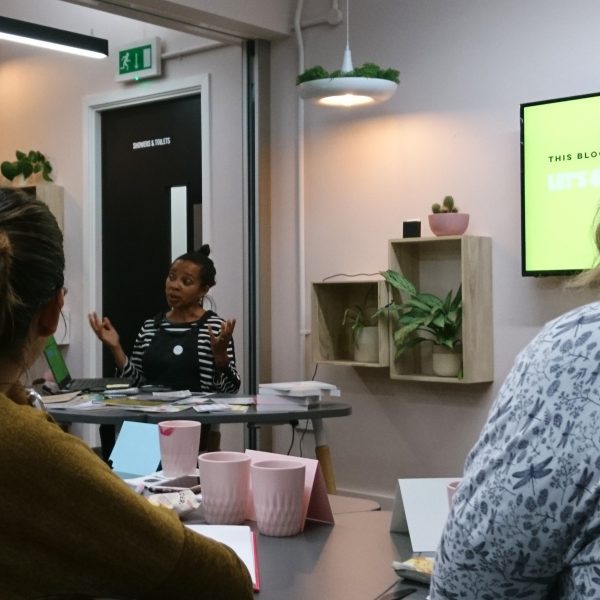
Natalie Lue of the Baggage Reclaim blog talking at Blogtacular about how to earn from your blog.
I recently attended a brilliant workshop on how to blog for money (This Blog Means Business), run by Blogtacular, where this subject was covered.
Disclosure: Blogtacular haven’t paid me in any way. In fact, I paid them. And it was well worth every penny – there’s an annual Blogtacular event every year, and if you want to blog, I strongly recommend that you go on their mailing list to hear about early-bird tickets.
What’s disclosure?
If you run a blog, vlog or podcast or you post on social media (even if you don’t blog for money) you need to know about disclosure.
If you read blogs, watch videos, listen to podcasts… it’s a good idea to understand disclosure. So you can tell if you’re being sort-of fibbed to.
And if you work for a company that deals with bloggers, vloggers or social media influencers in any way, you really, really need to know about disclosure.
Disclosure is explaining the money to readers. You have to be clear, and you have to do it at the earliest possible opportunity.

You have to explain the money….
For example, you – Ms or Mr Blogger-Vlogger-Influencer – write about choosing garden furniture. You’ve been paid a fee by John’s Kentish Garden Furniture Company. So you base it around their garden furniture (although, of course, your opinions will be your own).
So you must make it clear that you have been paid. Or you can label it ‘advertisement’, ‘advertorial’ or ‘ad’.
You are legally required to do that at the beginning of the post, video or podcast, NOT at the end.
And it can’t be weaselled over – ‘with thanks to John’s Kentish Garden Furniture’, ‘collaborative post’ or some other vague wording. You blog for money and John paid you. Readers need to know. At the earliest possible opportunity.
But surely then nobody will read it…?
Successful bloggers/vloggers usually say that they would only work with companies they’d be proud to work with. Full acknowledgement – upfront – is part of that.
One of my all-time top 10 posts is The Best Plants for Amazingly Low Maintenance Garden Pots. It was sponsored by Phostrogen/Baby Bio. It’s had over 64,000 page views since it was published in May 2017. The sponsorship disclosure comes immediately after the intro, with product information at the end. Being upfront about it doesn’t seem to have harmed the post.
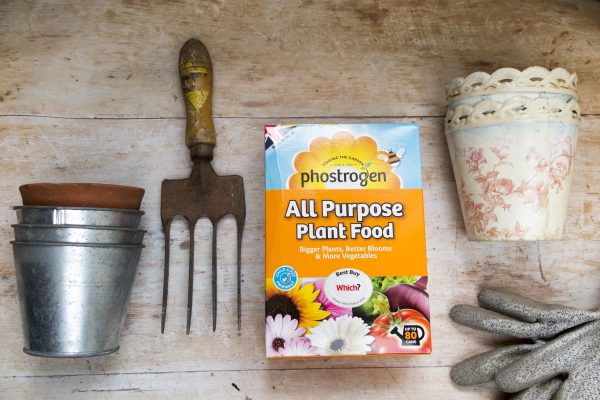
I enjoyed working with Phostrogen and Baby Bio. There was no issue – we were completely upfront about the sponsorship, and it’s been one of my most successful posts.
Admittedly, some people won’t like the fact that you blog for money. We are a bit squeamish (or snobby) when talking about such things in Britain. But we don’t like being misled, either.
What if it’s an ongoing relationship?
Suppose you have a long-term collaboration with a brand. Do you have to explain it every time you mention them on your blog, Facebook, Instagram and Twitter?
The guidelines say that even if regular followers know you’re sponsored, the commercial relationship needs to be clear to anyone who comes across a post and who isn’t a regular follower of yours. Recently a beauty blogger was ruled against by the ASA because of an Instagram post about a beauty product, which didn’t have any indication it was an advertisement. In her Instagram bio, it said that she was ‘brand ambassador’ for the beauty company, but that wasn’t enough.
What about affiliate sales?
In the US, most people understand what an affiliate link is. So you can say ‘affiliate link’ and that’s enough disclosure. (Affiliate links count as ‘advertising’, btw).
Here in the UK and Europe, you need to explain it. You don’t have to go into as much dreary detail as I do. Now that I’ve discovered that I am saying too much (at Blogtacular) I’m going to scale it back.
But, once again, the disclosure must come as soon as it’s needed. So if, halfway through a post, you recommend Monty Don’s book Down To Earth, with an affiliate link to Amazon, then you have to disclose that you may get a small fee – at that point or earlier.
This mention of Down To Earth is indeed an affiliate link. I usually say ‘Links to Amazon are affiliate links, which means I may get a small fee if you buy through them, but it doesn’t affect the price you pay. Other links are not affiliate.’
In fact, to comply with the rules, I just have to say ‘Links to Amazon are affiliate – find out more here’ with a link through to the full disclosure.
Or you can do it near the beginning of the whole post, as the Empress of Dirt blog does.
You have to display a badge saying you’re an Amazon affiliate (there’s one on the top right of this page), but that’s not enough on its own. Nor is burying the info at the bottom of the post. You risk violating both ASA rules and Amazon’s own disclosure guidelines. They may close your Amazon affiliates account without paying you.
Considering that my affiliate link explanation is so long, you’d think it would put people off. But I still make about £70 a month from Amazon affiliate links.
I don’t know if that’s good or bad, as I don’t know what other bloggers earn. But I will be interested to see if making my explanation shorter increases my income from Amazon. I might find (perversely) that it doesn’t, but will report back.
But it’s not just the ASA – there’s also Google
If you vlog, podcast or blog for money and you write about a company that is paying you (in any way), Google guidelines say you must use ‘no-follow’ links.
If you break this rule and are found out, then Google will stop listing you. It will also de-list the company that paid you.
A company or blog that doesn’t appear on Google is virtually invisible. Companies and blogs all want to come high up on Google when someone searches for something – and certainly when someone searches for their actual name.
If your company is called John’s Kentish Garden Furniture, you would like to appear if someone searches for ‘garden furniture in Kent’.
And you certainly want to appear if someone puts John’s Kentish Garden Furniture into a search engine because it means they not only wants garden furniture, they want your garden furniture.
But a few years ago, a big flower delivery company found itself not even ranking for its own name for a few months, let alone for ‘flower delivery’. Google had taken it off its listings.
What is follow and no-follow?
I often link to Posy Gentles’ garden consultancy website, because I think she’s very good at garden ideas and I often quote her. The link is an ordinary ‘follow’ link which means Google can see it. I’m effectively saying – to both you and Google – that I am personally recommending Posy.

Posy Gentles consulting – I can quote her with an ordinary (follow) link, because it’s a personal recommendation and I haven’t been paid in any way.
Websites that have ‘follow’ links from reputable sites rank higher up when you search on Google.
But if I’ve been paid in any way, then Google says it should be a ‘no-follow’ link or both parties risk being taken out of Google’s rankings completely (no-one knows if the flower company was de-listed due to follow links or whether there was another issue, by the way).
You, the reader, can click through on a ‘no-follow’ link and get all the information or buy the product. You won’t see any difference between a follow and a no-follow link.
But Google won’t follow it and it won’t improve the company’s ranking.
And here’s where it all goes horribly wrong…
Media agencies want to build their client’s follow links to push them up the Google rankings. So they offer to pay for follow links. Sometimes they want them ‘inserted’ into a post that’s already published. Or they insist that sponsored blog posts must have follow links.
Now here’s the thing. The media agency is not risking their own company being de-listed by Google. They’re risking your blog being de-listed. And their client’s website. I often wonder whether client companies realise what’s going on.
Because I don’t think I’ve ever known an actual gardening company or brand suggest circumventing these rules. Also, it’s rare for professional PRs to insist on follow links, too. But the pressure from other media agencies is relentless.
So if your company has engaged an agency, find out exactly what they’re up to. They may say it doesn’t matter. Or they may say it’s perfectly legal to pay for follow links. Which is correct. It’s not illegal, but it does have serious consequences if Google finds out.
And the Googlebots get very suspicious when they see a sudden increase in follow links to a particular company’s website.
To find out how to do no follow links, see Dummies or How to add a no follow tag to a link.
Er…what about ‘anchor text’?
Anchor text is a really sneaky one. You write your post about choosing garden furniture. When you say garden furniture, you highlight it and link it back to John’s Kentish Garden Furniture’s website (why did I invent a company with such a long name? Let’s call it JKGF).
If this is a follow link, then this helps JKGF to rank for higher up in Google when people search for ‘garden furniture’ online. The words ‘garden furniture’ are the anchor text. The reader has no idea that the link has been paid for.
The agency breezily says – in its email to the blogger – that it’ll tell you what words to link to in the post. The word I particularly link to at this point is ‘delete’. It’s in the top right of my mailbox….
So you always have to say when you vlog or blog for money?
Yes. Blogs, vlogs and podcasts don’t usually sell subscriptions. And we probably don’t get much out of taking standard banner advertisements (I haven’t tried it yet). There are various other ways of running a blog for money. A company can pay you to do social media. You can get a fee for affiliate links. Or you can use it to promote your other work or launch your own products.
And there are the softer ways of payment – free products, invitations to events, press trips…

The green bag was sent to me by the RHS as part of its gift range. It included Burgon & Ball tools, a mug and a scented candle diffuser. The quality is very high – as you would expect. But, however reputable brands are, I believe we need to see, handle and use things before recommending them.
The ASA definition is that an advertisement = payment + control. Payment can be product, vouchers or trips etc as well as money.
If a company gives you anything on the understanding that you will do something specific in return, then that is an advertisement. You must say so.
But it’s not an advertisment when…
If you get sent a review product, but you decide whether and when you review it and what you say, then it’s not an advertisement (provided that the company hasn’t asked for any sort of control, such as copy clearance or particular links).
The photo above shows a bag sent to me by the RHS with products to review. They had no idea when or if I was going to review the product. There were no demands as to links or wording. It doesn’t count as advertising.
You have to disclose you were sent it for free, but most bloggers do anyway.
I think it would be almost impossible to recommend a product without trying it. Blogs are very personal and you can’t put your name behind something you’ve never used. Nor can you buy every product you want to write about. And I think both readers and legislators recognise that.
It’s not fair…
When you read a travel article in a national newspaper or magazine, does it make it clear that the trip has been free? Right at the beginning? Or is it in the small print at the bottom of the article?
And what about those huge glossy advertisements? It’s well known that there’s pressure (strongly resisted, though) for their company’s products to be included in ‘editorial’? I think we garden writers are lucky that there is less advertising in gardening than there is in fashion/beauty, so we’re much less likely to be on the sharp end of this one.
Do the book review pages say that all the books reviewed have been sent for free? Or the beauty products? Newspapers and magazines don’t usually buy products for review, so pretty much everything will have been sent in free, but I’ve never seen that disclosed.
So perhaps it’s not fair that those who blog for money must sometimes work to higher standards of transparency than the traditional mainstream media. The answer, however, is to complain to the ASA, not to risk your own blog by flouting the rules.
Working with brands can be so exciting…
Working with brands can be very exciting, provided that it’s not just about links, click-throughs and money. When a brand or a blogger comes up with an idea, and both sides contribute (time, effort, creativity, contacts, expertise and – yes – finance), the results benefit the blogger, the brand and the consumer. There’s no need to try to deceive anyone.
The current #allotmentfashionweek run by blogger Grow Like Grandad is a good example. It’s fun, different and upfront about its sponsorship from Empathy Rootgrow. It looks great.
So what now?
If your company is paying an agency to ‘improve its Google ranking’, do please pass this round for discussion.
And if you think we should be open about who pays us when we podcast, vlog or blog for money, then please do share this post. If we all stand together, we can say ‘no’ to misleading demands.
We can be open and proud about saying ‘Yes, we blog for money.’
And if you don’t think I’ve been fair or accurate, please let me know on Twitter, Facebook or here in the comments. Thank you!
Pin for reference

The post What are the risks when you blog for money? appeared first on The Middle-Sized Garden.
from The Middle-Sized Garden https://www.themiddlesizedgarden.co.uk/what-are-the-risks-when-you-blog-for-money/






